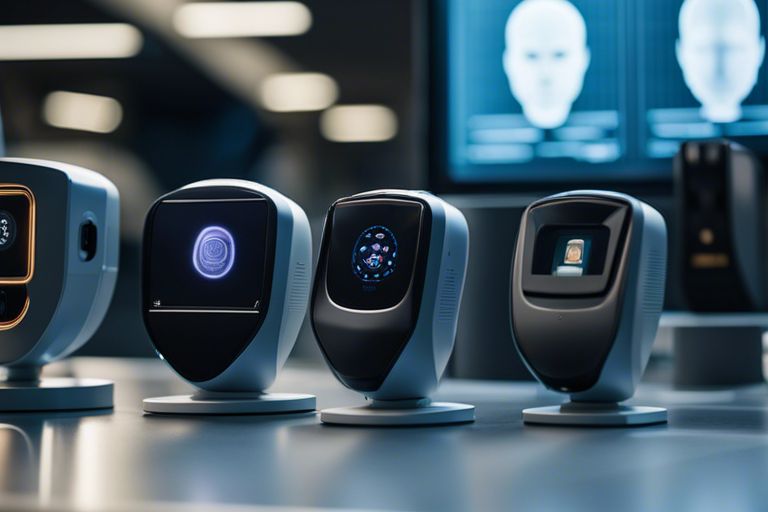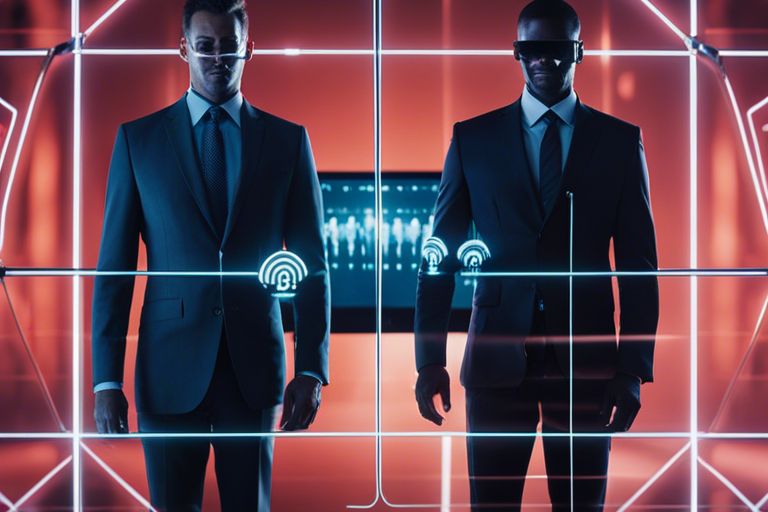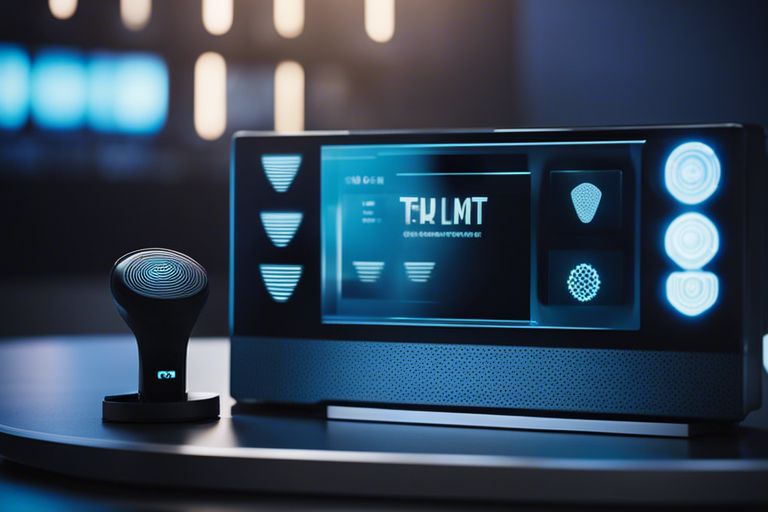What Is Endpoint Protection And Why It’s Critical For Cyber Security
You need to understand that endpoint protection is a vital component of your cyber security strategy. This technology...

Biometric authentication is becoming increasingly popular in the realm of cybersecurity due to its ability to provide a highly secure and convenient way of verifying the identity of users. From fingerprint scans to facial recognition technology, these measures offer a level of security that traditional password-based systems simply cannot match. In today’s ever-evolving technological landscape, businesses are constantly seeking ways to enhance their IT security measures, and biometric authentication presents a compelling option for companies looking to bolster their defenses against cyber threats. In this blog post, we will explore the benefits of integrating biometric authentication measures into your business IT infrastructure and discuss whether the investment is truly worth it in the long run.
Your business IT can benefit greatly from integrating biometric authentication measures. There are several types of biometric authentication methods available, each with its own unique advantages and considerations. Below is a breakdown of the most common biometric authentication techniques:
| Fingerprint Recognition | Facial Recognition |
| Iris Scanning | Voice Recognition |
| Behavioral Biometrics |
Fingerprint recognition is one of the most widely used biometric authentication methods. It involves scanning an individual’s fingerprint to verify their identity. This method is popular due to the uniqueness of fingerprints and the ease of capturing and verifying them.
For businesses, fingerprint recognition offers a high level of security and convenience. Employees can easily access devices or sensitive information by simply scanning their fingerprint. Any unauthorized access attempts can be quickly detected and prevented.
To enhance security measures, facial recognition technology analyzes and compares facial features to verify an individual’s identity. It is a non-intrusive method that can be integrated into existing security systems for access control or attendance tracking purposes.
Biometric facial recognition can be particularly useful in enhancing surveillance systems and monitoring employee presence or customer interactions. This technology is constantly evolving to improve accuracy and performance.
For businesses looking to implement facial recognition, it is essential to consider factors such as lighting conditions, angles, and potential privacy concerns. A thorough evaluation of the technology’s capabilities and limitations is crucial for successful integration.
Any iris scanning authenticates individuals based on unique patterns in their iris, which are even more distinct than fingerprints. This method offers a high degree of accuracy and is less prone to false positives compared to other biometric authentication techniques.
This technology is commonly used in high-security environments where precise identification is essential. Iris scanning can also be integrated into access control systems to restrict unauthorized entry effectively.
Facial recognition technology utilizes distinct features of an individual’s face to verify their identity. It is commonly used for security purposes and can be employed in various industries, including banking, healthcare, and law enforcement.
For instance, voice recognition can be used for phone-based authentication, enabling secure access to accounts or information through voice commands. This technology evaluates voice patterns and characteristics to authenticate users effectively.
One of the newer developments in biometric authentication is behavioral biometrics. This method analyzes unique patterns in user behavior, such as typing speed, mouse movements, or swipe gestures, to verify identities.
Behavioral biometrics provide an additional layer of security as they focus on how individuals interact with devices rather than physical traits. This approach offers continuous authentication, adapting to user behavior changes over time for improved security.
Behavioral biometrics can be particularly beneficial for businesses looking to enhance security without inconveniencing users with additional authentication steps. By incorporating behavioral patterns into the authentication process, organizations can strengthen their overall security posture and reduce the risk of unauthorized access.

Biometric authentication offers enhanced security features that are unparalleled in the realm of traditional password-based systems. Biometric identifiers such as fingerprints, iris scans, and facial recognition are unique to each individual, making it extremely difficult for unauthorized users to gain access. This level of security significantly reduces the risk of identity theft, data breaches, and other security-related incidents.
Furthermore, biometric authentication measures are nearly impossible to replicate or forge, providing an extra layer of protection for sensitive business information. By integrating biometric authentication into your business IT systems, you can enhance security protocols and safeguard your company’s valuable data.
An additional advantage of biometric authentication in business is the ease of use and increased efficiency it offers. Employees no longer need to remember complex passwords or worry about resetting them regularly. Biometric identifiers are inherently tied to the individual, making the authentication process seamless and convenient.
In addition, biometric authentication reduces the need for manual entry of passwords, saving time and streamlining access to various systems and applications. This not only increases productivity but also enhances user experience by eliminating the frustrations associated with traditional authentication methods.
Efficiency is a key benefit of integrating biometric authentication into your business operations. With streamlined access controls and reduced administrative tasks related to password management, employees can focus on their core responsibilities without the hassle of constantly resetting or retrieving passwords.
On top of improved security and efficiency, biometric authentication provides a robust framework for establishing accountability and ensuring regulatory compliance within your organization. By accurately linking system activities to specific individuals through biometric identifiers, businesses can track and monitor access to sensitive information.
Furthermore, biometric authentication measures can aid in meeting industry-specific compliance requirements such as GDPR, HIPAA, and PCI DSS. These regulations often mandate stringent security protocols to protect sensitive data, and biometric authentication can help businesses meet these standards effectively.
Authentication

Privacy is a paramount concern when it comes to implementing biometric authentication measures in a business IT environment. Collecting and storing biometric data raises ethical questions about how this sensitive information is used and protected. Many individuals are wary of biometric data being compromised or misused, leading to potential breaches of privacy.
Furthermore, the implementation of biometric authentication can raise concerns about consent and user control over their personal information. Businesses must navigate the delicate balance between enhancing security measures and respecting the privacy rights of their employees and customers.
To integrate biometric authentication measures into business IT systems, there are significant implementation costs involved. This includes the initial setup of hardware and software, as well as training employees on how to use the new technology effectively. However, the return on investment can be substantial in terms of improved security, efficiency, and user experience.
This initial investment in biometric authentication technology can lead to long-term cost savings by reducing the need for password resets, preventing security breaches, and streamlining access control processes. Businesses must carefully assess the financial implications and potential benefits before deciding to adopt biometric authentication measures.
Challenges may arise due to technological limitations and the risk of errors associated with biometric authentication systems. Factors such as environmental conditions, hardware malfunctions, and changes in a user’s biometric data over time can impact the reliability and accuracy of biometric authentication.
The deployment of biometric authentication systems requires thorough testing and quality assurance to mitigate the risk of errors that could lead to unauthorized access or system failures. It is crucial for businesses to recognize these limitations and implement appropriate safeguards to ensure the effectiveness and reliability of their biometric authentication measures.
Despite the potential benefits of biometric authentication measures, integrating them into your business IT requires careful planning and consideration. Following best practices can help ensure a smooth and secure implementation.
Any decision to integrate biometric authentication measures should begin with a thorough assessment of your business needs and security requirements. Consider the sensitivity of the information and data you need to protect, as well as the potential risks and threats your organization faces. Understanding these factors will help you determine which biometric technologies are most suitable for your business.
Additionally, conducting a risk assessment can help identify the specific areas where biometric authentication could strengthen your security posture. By aligning the technology with your specific security needs, you can ensure that your investment in biometrics provides the greatest possible benefits.
Any successful integration of biometric authentication measures requires the development of a comprehensive policy that outlines how the technology will be used within your organization. This policy should address issues such as data privacy, consent requirements, and the handling of biometric data. In addition, providing thorough user education and training is essential to ensure that employees understand how biometric authentication works and why it is being implemented.
It is also important to establish clear guidelines for how biometric data will be collected, stored, and used to maintain transparency and compliance with relevant regulations. By clearly communicating these guidelines to employees, you can help foster trust in the technology and minimize resistance to its adoption.
Assessing the effectiveness of your biometric policy and user education efforts is crucial for ensuring the successful implementation and ongoing use of biometric authentication measures. Regular audits can help identify any gaps or areas for improvement, while updates to security protocols can address emerging threats and vulnerabilities. By staying proactive in your approach to security, you can better protect your business and its sensitive information.
Conclusively, integrating biometric authentication measures into your business IT system can significantly enhance security and streamline authentication processes. From fingerprint scanners to facial recognition technology, these measures offer a more secure and convenient way for employees to access sensitive information. While there may be initial costs and potential challenges in implementation, the benefits in terms of security and efficiency far outweigh the drawbacks. With cyber threats on the rise, biometric authentication is certainly worth considering as a robust and reliable security solution for your business.
You need to understand that endpoint protection is a vital component of your cyber security strategy. This technology...
You rely on robust cybersecurity measures to protect your business from evolving threats, and Endpoint Detection and...